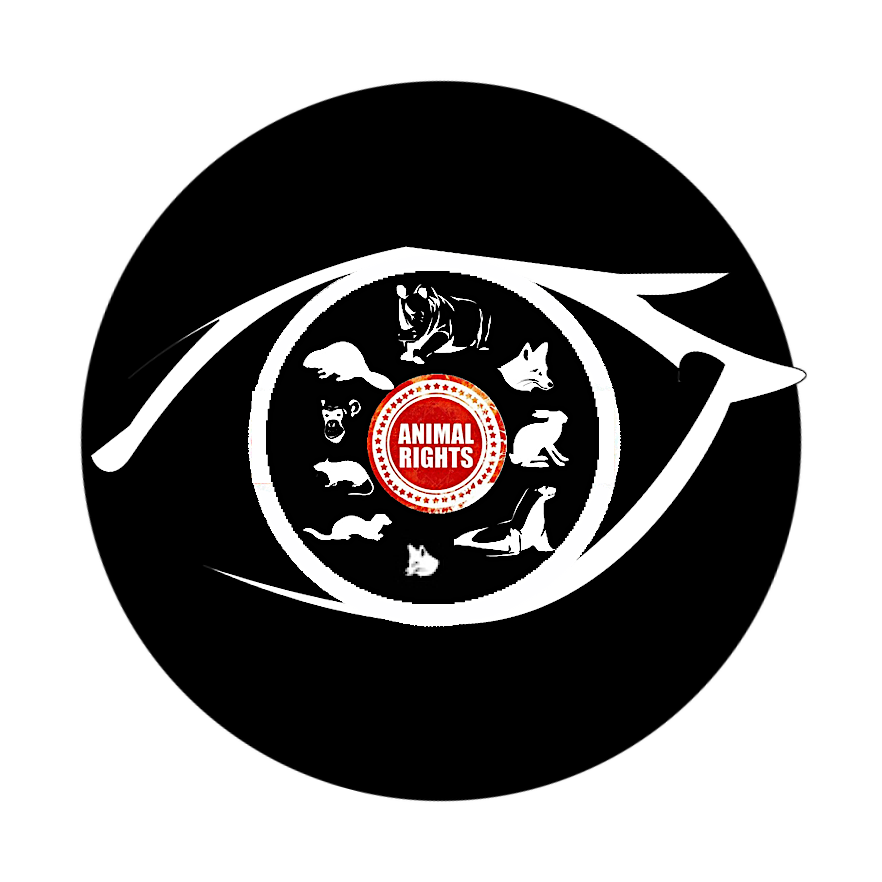With the prominent use of undercover footage in animal liberation documentaries’, the underdog activists gain surveillance power over industry by shining the light of scrutiny on their actions. Indicative of the films’ strategic function and form, there is fundamental power in what is (not) seen. Industries intentionally obscure animal suffering. There are material barriers, and animals are kept hidden in the dark by industry and governments that profit immensely from animal products. But, we would be in error to say that only powerful entities and material objects conceal industrial spaces of animal suffering from the public’s view. Much of the public is complicit in the obstruction of these spaces, as psychological and emotional barriers serve to support self-deception. The public consumes animal products, as well as innumerable products tested on animals, in alarming proportions.
CARRIE PACKWOOD FREEMAN: ‘You better hope the anti-vivisection people don’t get a hold of this film,’ laughs a laboratory worker as she videotapes herself tormenting a scared monkey during shock treatments – a video that prophetically ends up in the activist documentary ‘Behind the Mask’. This is just one of dozens of examples of video footage that industries never meant to see the light of day, but which documentarians critically showcase for public scrutiny. While some footage in animal liberation documentaries was created by animal-exploitative industries as in-house training or private research videos, most documentations must be filmed by activists themselves via covert operations designed to uncover what is concealed in industries profiting from agriculture and fishing, fur, marine parks, circuses, and biomedical research.
Activists circulate these disturbing visual images on the internet or in leaflets, and, increasingly, they are weaving them into feature-length documentary formats where the narrative structures define nonhuman animals as morally relevant victims, animal rights activists as heroes, and animal exploiters as villains. These documentaries warrant attention not only because they often win film festival awards, but also because they function as a critical counterpoint to the hegemony of speciesist rhetoric circulating in the public sphere. Documentaries about the exploitation of animals and animal liberation activism are not a new phenomenon, but the explosive proliferation of these films the past decade further justifies critical inquiry.
In this chapter we analyse seven recent animal liberation documentaries, their use of undercover images, and their rhetorical function as social change advocacy. Utilising the power of nonfictional moving image, the seven documentaries introduced below challenge anthropocentrism by making nonhuman animals a central character and plot point, characterizing their treatment (however legal) as criminally abusive… By explaining how this collection of animal liberation documentaries’ prominent use of undercover footage functions as a reverse panopticon, where the underdog activists gain surveillance power over industry by shining the light of scrutiny on their actions – elevating the audience above the barriers to witness prisoner conditions. Barriers to seeing are not just material, however; they are also conceptual. The hegemony of humanism is a basis for justifying discrimination and exploitation of other animals…
Indicative of the films’ strategic function and form, there is fundamental power in what is (not) seen. Industries intentionally obscure animal suffering. There are material barriers, fences and buildings that prevent seeing, and animals are kept hidden in the dark by industry and governments that profit immensely from animal products. But, we would be in error to say that only powerful entities and material objects conceal industrial spaces of animal suffering from the public’s view. Much of the public is complicit in the obstruction of these spaces, as psychological and emotional barriers serve to support self-deception. The public consumes animal products, as well as innumerable products tested on animals, in alarming proportions. These finished products, themselves void of visible suffering, are part of the core fabric of everyday life. But to see the blood and maltreatment these products inherently entail would be to furnish a painful dissonance with the comfort provided by these products in our lives. Thus, much of the public voluntarily opts out of seeing the industrial spaces of animal suffering…
The intensified frequency of posthumanist documentaries that feature undercover film of animals and activists counter their ‘invisibility’ and provide alternative narratives to the hegemonic discourses of postindustrial society and a commercialised public sphere. This essay demonstrates that these documentaries serve several vital functions in the strategic arsenal of animal rights activists. Three specific functions of these films have been emphasised here, including: 1) thrusting clandestine spaces of animal cruelty onto the public screen and exerting a reverse panopticon pressure on industries; 2) challenging the human/animal dualism, the violent hierarchy it justifies, and the (imagined) humane self-image of society; and 3) serving as a critical rhetoric that constructs dissonance-producing antagonisms, (dis)identification, and legitimacy of the movement. SOURCE…
RELATED VIDEOS:

